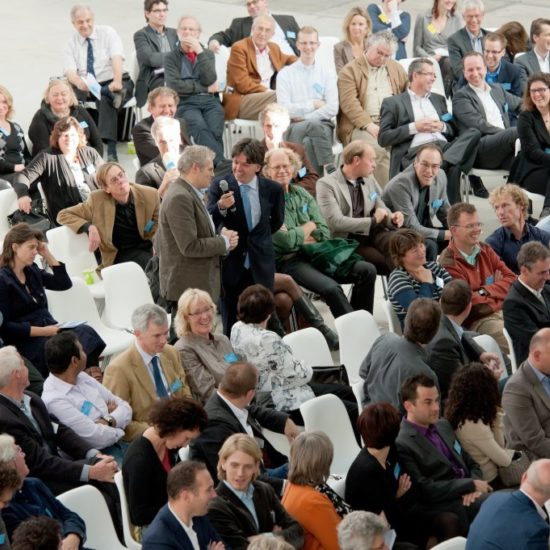Interactive building blocks of a succesful meeting: welcome

The average moderator will start a meeting by saying 'welcome', followed by an overview of proceedings and program. This misses the point of a great opening completely!
The first moments of any meeting are crucial en should therefor be designed with care. In the first minutes (or even seconds) you do the coding for the entire event and you mould the group into a temporary tribe.
Great content, inspiring speakers, a beautiful venue, top-notch catering and ofcourse the perfect moderator ... they are all worthless when the event is poorly designed.
When composing an opening, there's a few things to consider.
Coding
What will be the unwritten rules of this conference? Without actually telling people what they are, the first few minutes are crucial in getting them in the right mood. So if you want them to be interactive, creative, sharing & caring or whatever, this is the moment to show them.
Concept
Have people listen to a series of opening statements and participants will, subconsciously, immediate paint a picture of the proceedings for the rest of the day: sit and listen. This means that if you want them to interact for instance, you need to start with that.
The same goes for any concept that you may have chosen: playful, explorative or aiming for debate. You need to set the scene, right from the start (other them by telling them, while going through the schedule).
Context
Participants have a need to understand the why of things. And again, the idea is nót to tell them, but to show them. So design an opening that will get them into the right context.
Tone, pace & style
As a moderator, you need to make a conscious choice: how will I adress the audience? Will I be serious or lighthearted, fast-paced or laid back, present or modest. By making this choice, you will lay the foundation for your relation with the participants.
But note: as in any relation, your behavior may have to change situation-by-situation. I mean: you won't be friendly to your toddler 100% of the time, will you? At least, not when you want it to learn something. So basically you need to recalibrate for every new element in the program.
The Red Line
In many cases, an event becomes more effective, when there's a red line. Often, this can be a returning assigment to all partcipants, helping them structure learnings and translate them to their daily reality. Apart from putting in the effort to thouroughly design this part, you need to introduce it early in the program. This - again - is about coding.
Conclusion
The welcome is often underrated and may seem futile. But be aware, if you start of poorly, it will have an exponential negative effect on the outcome of the meeting.
Jan-Jaap In der Maur
Picture by Tim Mossholder on Unsplash

Together, we make the best match!
We know our moderators better than anyone. We understand your needs. We will gladly help you find the best solution.
